February 12, 2025, marked an important shift in the activities of the M23 rebels. The situation in the Democratic Republic of Congo (DRC) turned grim after the M23 rebels resumed their offensive against Congolese government forces just two days after declaring a unilateral ceasefire on humanitarian grounds. Earlier this year, they had taken over Goma, the largest city in the North Kivu province in eastern Congo. Now they have threatened to move towards Bakavu, the capital of South Kivu province after the ruling party, the Union for Democracy and Social Progress (UDPS) refused to directly engage in talks with the rebels. UN aid groups reported that more than two million of Goma’s civilians including one million already displaced by violence were at risk of ‘catastrophic’ humanitarian consequences with hundreds of wounded coming every day as it is the civilians who get caught in the crossfire.
The ongoing conflict in DRC is not new and the country faced conflicts for more than 30 years, which can be traced to deep-rooted factors. The M23 is one of many armed factions fighting for a foothold in eastern Congo, a hub containing trillions of dollars’ worth of untapped mineral wealth.[1] To understand the M23 rebels’ latest offensive, we need to look back at their origins and why they are fighting in the DRC.
The M23 rebels, formally known as the March 23 movement are an armed group operating in eastern DRC, claiming to uphold the rights of the Tutsi minority in the region. The group is primarily made up of ethnic Tutsis who were not integrated into the Congolese army and as a result, they led an insurgency against the Congolese government in 2012, which failed. They remained dormant for a decade until their resurgence in 2022. It is interesting to note that although the M23 portrayed themselves as the protector of the Tutsi minority from Hutus and defenders of civilians against government corruption and neglect, they ultimately caused more harm and ruckus, leading to widespread instability and displacement.
This conflict can be traced back to the aftermath of the 1994 Rwandan Genocide when around 1 million ethnic Tutsis as well as moderate Hutus and Twa were killed by the Hutu militia.[2] The Tutsis fled to neighboring countries like Uganda, Tanzania, Burundi, and the DRC. After the genocide, the Rwandan Patriotic Front (RPF) led by Paul Kagame overthrew the genocidal regime and over 2 million Hutu refugees fled to eastern Congo. Between 1996-2003, the region was in turmoil as armed groups fought over access to political power and exploitation of natural resources such as copper, cobalt, lithium, and gold. This era of conflict culminated in the First and Second Congo Wars which are often referred to as ‘Africa’s World War’.[3] In 2003, a peace agreement was signed but several rebel groups like the Democratic Forces for the Liberation of Rwanda (FDLR), a Hutu rebel group, and the National Congress for the Defense of the People (CNDP) continued to operate in the region.
The CNDP was a Tutsi rebel group that had been fighting against the FDLR and the Congolese army. On March 23, 2009, a peace agreement was signed between the Congolese government and the CNDP. The main terms of the agreement aimed to transform CNDP into a political party and integrate its members into the government, local administration, and more importantly, into the Congolese national army. These goals were not met and in 2012, the disillusioned CNDP members broke away to form the March 23 Movement (M23). The failure of the agreement contributes to the emergence of a rebellion that has escalated into a humanitarian crisis in an already turbulent region. This insurgency was however short-lived. Due to increased international pressure from the United Nations (UN) and African Union (AU) and the suspension of military aid by the US and Britain to Rwanda, for its alleged support to the M23 rebels. The rebels, as a result, surrendered Goma, which they had seized for about a week.
This brings to light the neighbouring country, Rwanda’s role in the ongoing crisis. The UN, US, and DRC have accused Rwanda of backing the M23 rebels. According to the UN, in 2021, the M23 had only hundreds of members but now the group has around 6,500 fighters.[4] Rwanda, however, denied these claims but acknowledged that it had stationed troops and missile systems in eastern Congo. It justifies its military presence in the DRC by citing security concerns and the presence of FDLR, the Hutu rebel group which it accuses DRC of providing support. The UN experts estimate that there are around 4,000 Rwandan forces in Congo.
Recently, the M23 made headlines for smuggling significant quantities of ‘colton’ a mineral ore from which tantalum is extracted to Rwanda. They had seized the Rubaya area, which supplies up to 15% of the world’s tantalum, a critical mineral used in electronics, aerospace, and medical devices.[5] The rebels not only seized the mines but also controlled the trading routes which enabled them to smuggle the minerals to Rwanda from where the minerals were exported legally. The minerals thus enter the international markets labeled as ‘conflict free’. This channel of extracting the minerals not only funds rebel operations and contributes to the Rwandan economy but also deprives the DRC of legitimate revenue from its natural resources. Rwanda’s role thus reflects how historical linkages, security issues, and economic interests come together to prolong the crisis, contributing to regional instability that ultimately culminated in a severe humanitarian crisis. The civilians eventually bear the brunt of this conflict without any fault of theirs.
The UN says that there are about 6.7 million people who have fled from their homes, most of them being from North and South Kivu provinces. The latest violence has forced more than 500,000 from their homes since the beginning of the year, placing overcrowded and under-resourced displacement camps under extreme pressure. Many people in Goma are still facing difficult humanitarian conditions. Essential services, particularly water and electricity, are not yet fully operational. The UN peacekeeping mission in DRC, MONUSCO has extended its term for another year due to escalation of conflict. The South African Development Community (SADC) despite deploying its forces in DRC was unable to halt the rebel advances. The DRC was the largest recipient of US humanitarian assistance in the world in 2024, and 70 percent of the $1.3 billion in funding received that year came from Washington.[6] Given the huge dependence on US assistance, the Trump administration’s decision to temporarily suspend foreign aid would have a disastrous impact and might lead to the shutting down of all the emergency programmes that have helped address the crisis.
The M23 rebellion has caused regional instability and insecurity in the DRC. The issue reflects that economic and security issues are closely connected. Rebel groups like the M23 were primarily ethnic groups who now have become a part of the race for access to these resource-rich regions, a race dominated by global powers like China and the US. The DRC produces 80 percent of the world’s cobalt with nine of the ten largest cobalt mines in the world are in DRC.[7]Of these ten largest mines, half are owned by Chinese companies and 67.5 percent of China’s refined cobalt comes from the DRC.[8] China through its Belt and Road Initiative has invested heavily in infrastructure, ports, roads and railways across the continent. As a bid to counter China’s stronghold over critical minerals, the US invested in a massive infrastructure project called the Lobito corridor. The rail line stretching over 800 miles will drastically cut down on transportation time from DR Congo's copper and cobalt mining region.[9] But despite this U.S. push to increase its footprint in critical minerals, China remains dominant. Its firms own over 80 percent of Congo's copper mines, very similar to its position in cobalt extraction as mentioned earlier.[10] But this geopolitical competition rivalries means little to the Congolese people who benefit little from their country’s vast mineral resources. On the contrary, they are often at the receiving end of the consequences arising from rebel offensives, competition between China and US and government corruption.
Why is no one stopping the crisis? The ongoing conflict brings to light the interplay of factors that have protracted it. Is it the incompetency of the DRC’s national army, Rwanda’s alleged role in supporting the rebels to obtain economic and political influence over eastern Congo, or international difference towards the ‘dark continent’? Whatever the answer might be, it is crucial to curb this crisis to prevent it from escalating into a severe humanitarian disaster.
End Notes
[1] Deforestation Trends in the Congo Basin: Reconciling Economic Growth and Forest Protection, Working Paper-4, Mining, World Bank on 10 February 2025 at https://documents1.worldbank.org/curated/fr/830391468202168612/pdf
[2] The United Nations Outreach Programme on the 1994 Genocide against the Tutsi in Rwanda on 8 February 2025 at https://www.un.org/en/preventgenocide/rwanda/historical-background.shtml
[3] Office of the Historian, Foreign Service Institute, United States Department of State on 10 February 2025 at https://history.state.gov/milestones/1961-1968/congo-decolonization
[4] DR Congo: Atrocities by Rwanda-Backed M23 Rebels, Human Rights Watch on 12 February 2025 at https://www.hrw.org/news/2023/02/06/dr-congo-atrocities-rwanda-backed-m23-rebels
[5] Minerals 101: Tantalum, Resource Capital Funds on 11 February 2025 at https://resourcecapitalfunds.com/insights/mining-and-minerals-101/tantalum/
[6] Humanitarians uphold commitment to support civilians in eastern DR Congo, Global Perspective Human Stories, UN News on 10 February 2025 at https://news.un.org/en/story/2025/02/1160031
[7] “World’s Ten Largest Cobalt Mines in 2020,” Mining Technology (website), 12 February 2025, at https://www.mining-technology.com/marketdata/ten-largest-cobalts-mines-2020-2/
[8] Claude Kabemba, “China-Democratic Republic of Congo Relations: From a Beneficial to a Developmental Cooperation,” African Studies Quarterly 16, no. 3–4 (December 2016) on 13 February 2025 at
https://asq.africa.ufl.edu/wp-content/uploads/sites/168/v16a6.Kabemba.HD_.pdf
[9] Lobito Corridor: What It Is & Why It Matters, Lobito Corridor Investment Promotion Authority on 16 February 2025 at http://lobitocorridor.org/
[10] US FACT SHEET: Partnership for Global Infrastructure and Investment in the Lobito Trans-Africa
Corridor, US Embassy and Consulates in China on 16 February 2025 at https://china.usembassy-china.org.cn/fact-sheet-partnership-for-global-infrastructure-and-investment-in-the-lobito-trans-africa-corridor/
(The paper is the author’s individual scholastic articulation. The author certifies that the article/paper is original in content, unpublished and it has not been submitted for publication/web upload elsewhere, and that the facts and figures quoted are duly referenced, as needed, and are believed to be correct). (The paper does not necessarily represent the organisational stance... More >>
Image Source: https://ichef.bbci.co.uk/news/800/cpsprodpb/2dc2/live/d0f2fb10-eae5-11ef-bd1b-d536627785f2.png.webp



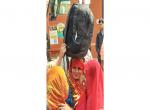
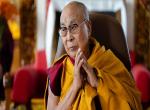
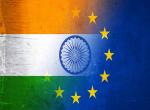

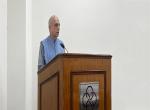
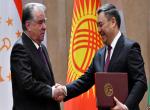


Post new comment